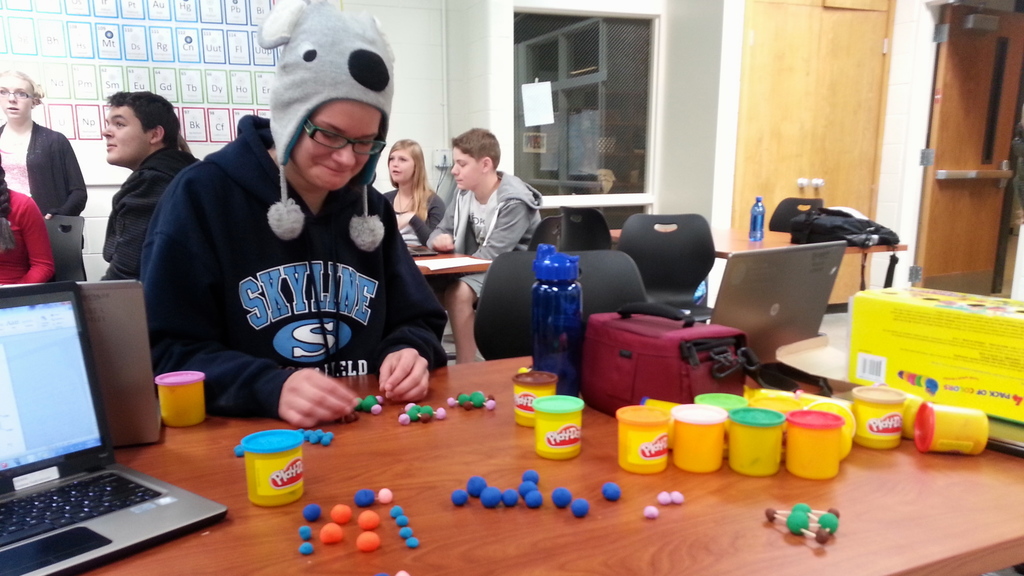Arik Durfee was all but ready to get out of teaching.
After five years teaching in the Idaho Falls School District, Durfee began to question his career choice, wondering if he was getting through to children the way he envisioned.

“I was feeling powerless to make improvements in education,” he said. “To feel like your hands are tied; that it’s not as effective as you want it to be, but you are not allowed to make it more effective. That’s very frustrating.”
What a difference a year makes.
At the start of the 2012-13 school year, Durfee joined the staff at Compass Academy, a first-year magnet school that is part of the growing New Tech Network.
School director Matt Bertasso said the New Tech network was created as a model to better prepare graduates for the next phase of their life, whether it was college or a career.
“The idea is business owners and community members saw a need for students to be better prepared after high school,” Bertasso said. “Students weren’t coming out ready for what the workforce offered them. With that end in mind, we worked backwards to create a model for that.”
Compass Academy is the only New Tech high school in Idaho.
Everything is project-oriented, and students regularly work in small groups.
Many subjects are integrated.
Health and biology are married.
And a fusion of U.S. History and English becomes American studies.
For Durfee, an English teacher, this means he paired up with a science teacher and chemistry experiments are constantly going off in his classroom.

“In the real world nobody has ‘English’ careers, unless you’re an English teacher or maybe an editor,” Durfee said. “But a scientist that works at Idaho National Laboratory has to read and write constantly, but they wouldn’t consider themselves in an English career. What we are trying to do is find where English standards apply to careers. “
Textbooks are used sparingly and students don’t have their own and they don’t take them home.
Every student has a laptop, an HP Folio, equipped with the Adobe software package, that students take home.
“I hope they are taking them home,” Bertasso said. “There is a lot of work to be done.”
Project based approach
As for the student projects, they are as varied as comic books, YouTube videos or brochures.
Ninth-grader Amber Daniel used Play-Doh to construct atoms and molecules. Then she filmed a video presentation using the atoms to describe everyday chemistry applications to a novice audience.
Daniel wants to be an engineer, and she appreciates the real-world qualities of Compass Academy projects.
“Traditional school was pretty easy for me,” Daniel said. “I wanted more of a challenge. You have to strive to make sure you get an A.”
Ninth-graders Kody Crane and Gil Hernandez filmed a Billy Mays-style infomercial in front of a green screen. Their goal was to explain how the chemical properties of a new deodorant and antidandruff shampoo made theirs a superior product.
“I definitely like group work and haven’t been put in a bad group,” Hernandez said.
Crane also said the project-based group learning helps him excel.
“The learning environment is great,” Crane said. “I’d rather come here than a traditional high school.”
Crane said he knows the school attempts to replicate real life, but one drawback is being put in a group where one or more students miss a deadline or don’t do the work.
Then the whole group’s grade suffered, he said.
Another student, Dillon Johnson, cautioned the school wouldn’t be right for every student – especially those who have a different learning style.
Ninth-grader Brady Griffith came to Compass after participating in the district’s advanced PACE program at his previous school.
Griffith was looking to be pushed academically.
“I’d say it’s pretty challenging and you learn a lot,” Griffin said.
Because Compass Academy is finishing its first year, there isn’t much data to compare student growth or performance. But Bertasso said, nationally, that the New Tech network students college persistence rate is 90 percent at four-year schools. Nationally, about 75 percent of students persist.
“(New Tech schools) typically score at or above our peer schools,” Bertasso said. “Our goal is to score at least as good as Idaho Falls or Skyline (high schools).”
As for Durfee, he said the school has inspired him and his students in its first year. And he isn’t re-thinking his future as an educator any longer.
“Somebody asked me how I was feeling about this and if I would come back to Compass next year, and I just laughed,” Durfee said. “I’m one hundred percent sold on what we’re doing here. The philosophy in what we’re trying do is exactly what I think we have been needing in education for several years.”
About New Tech Network
- Nonprofit organization, a subsidiary of KnowledgeWorks.
- Founded in Napa, Calif., in 1996. Includes more than 120 schools in 18 states.
- Schools use a project-based instructional model and a one-to-one computing ratio.
About Compass Academy
- Opened in the fall of 2012 as a magnet high school in the Idaho Falls School District.
- Served students in 9th and 10th grades during 2012-13; enrollment of 250.
- Will serve grades 9-11 during 2013-14 and then become a four-year high school.
- Target enrollment is 150 per grade level, or 450 for 2013-2014.
